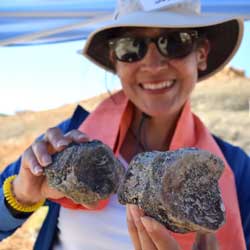 Deborah Richardson
Deborah Richardson
Middle school teacher, Onalaska, Washington
Deborah teaches middle school science, Road Trip USA, and Leadership at Onalaska Middle School in Onalaska, WA. With the support of donors, grants, colleagues, parents, and administrators, she incorporates hands-on, project-based learning in her classroom, from water quality testing to repairing riparian zones by planting trees and supporting her students to present at the Water Quality Congress with other schools reporting water data.
DIG Field School helped Deborah connect with other like-minded teachers and learn new ways to integrate authentic learning experiences into her classroom:
“The DIG Program has helped recharge my batteries. All the in-depth training I learned from this amazing program had me go back and rethink and restructure ways to teach and reach each of my students.
“One of my favorite memories [from Field School] was army crawling looking for microfossils. I loved seeing the total investment from me and my fellow DIG students on hands and knees looking for these small fossils.”
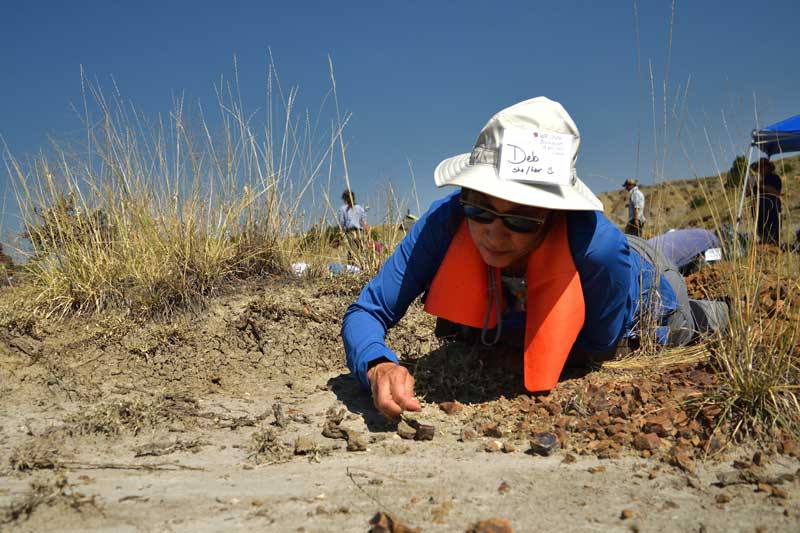
Like many other DIG participants, she is eager to relive her Field School experience with her students this winter:
“I plan on sharing everything I learned with my students when we get our first DIG Box. My fellow 6th graders are so proud of me and my adventurous spirit for learning a new skill.”
For other fellow educators considering the program, she adds:
“I am happy to report—you are never too old to learn anything!”
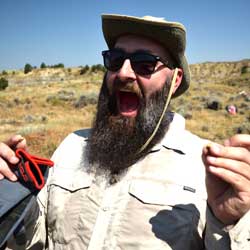 Kristopher Phillips
Kristopher Phillips
High school teacher, Carrollton, Texas
Kristopher teachers Earth and Space Science at Hebron High School in Carrollton, TX. He is the only ESS teacher in a district of 50,000 students and appreciated connecting with other teachers in his speciality during Field School:
“DIG helped me grow my network of Earth Science teachers. I don't get a lot of collaboration because I'm the only one in our district that teaches this course so having a group of teachers that are just an email or text away has been a life saver for me.”
DIG also has given him new ways to connect with his students’ interest:
“DIG helped me find a way to accommodate my students' desire to learn about dinosaurs. It's always the number one requested topic, and I've not been able to find a way to seamlessly include it in my curriculum. DIG made that happen. They also gave me street cred with my students when it comes to paleontology work and research.”
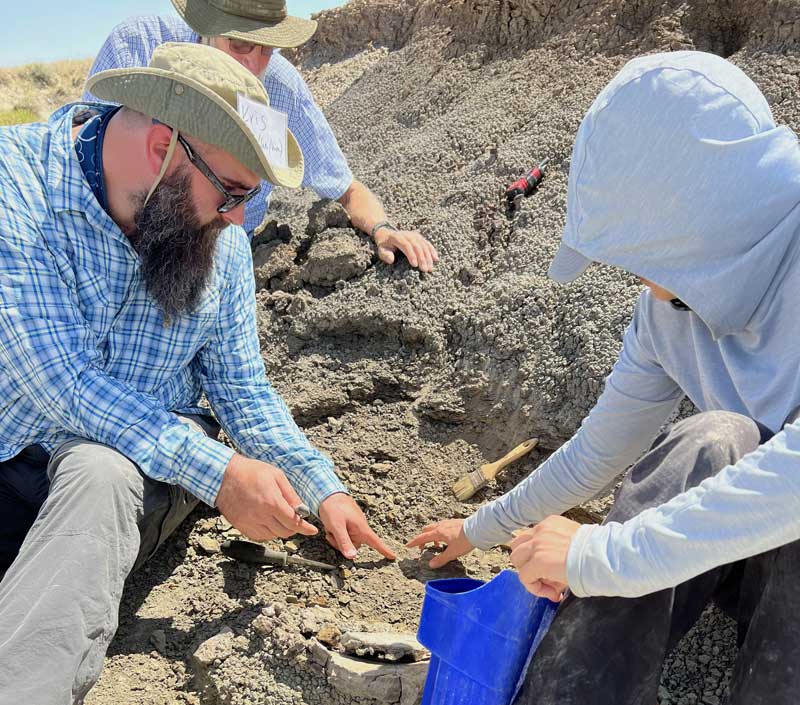
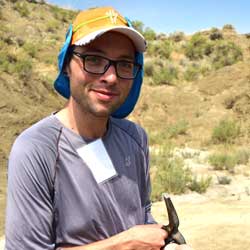 Zach Shinkle
Zach Shinkle
High school teacher, Derby, Kansas
Zack teachers biology and environmental science at Derby High School in Derby, Kansas. As an early career teacher, Zack says learning alongside veteran science instructors during Field School was an invaluable benefit to the program.:
“Participating in the DIG Field School was an amazing experience. As a new teacher who was out of the science field for a few years before coming back as a science teacher, I really struggled connecting concepts to real world examples. The DIG Field School was exactly what I needed to be able to connect what I am teaching to real world experiences and research that is happening now.”
Since returning to school this fall, Zack found that his time with DIG has added a renewed energy to his classroom teaching:
“The first week of school, I was able to get them excited for science by showcasing my experience from [Field School] and showcasing fossils. My classroom was already dinosaur themed but after attending DIG school, I added a Geological Timeline to my room and am regularly bringing up different concepts and ideas based off of it. I am also excited to bring a Burke Box to my class here in the next couple weeks. I am hoping that it will bring back some excitement for science and let them see how they can be part of research that is currently happening.”
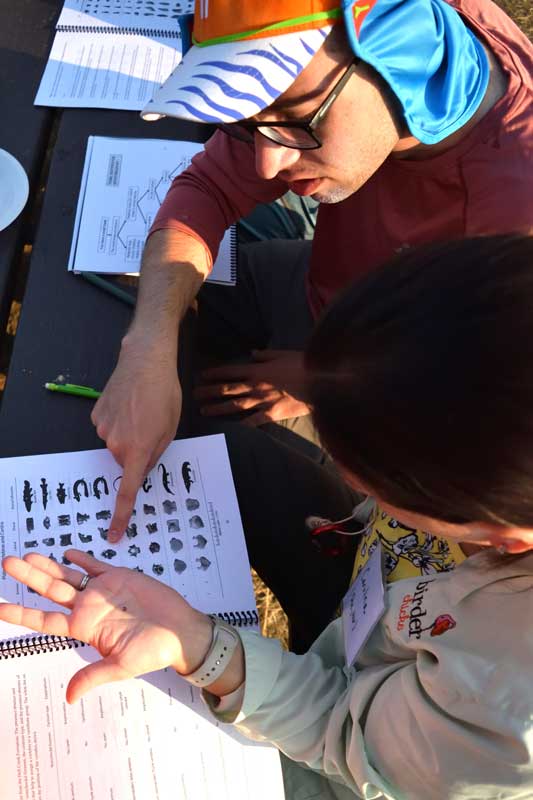
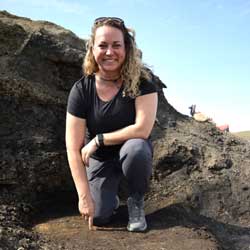 Jen McGonigle
Jen McGonigle
Middle school teacher, Cinnaminson, New Jersey
Jen teaches 7th grade general science at Cinnaminson Middle School in Cinnaminson, NJ, a suburb of Philadelphia. Jen takes pride in being able to build her curriculum from the ground up and as a veteran teacher of over 22 years, she continues to look for new opportunities to bring to her students.
One of Jen’s favorite experiences from Field School was learning about macrofossil excavation techniques and getting hands-on experience digging up macrofossils in the field:
“The macro dig day was such a memorable day because real dinosaur fossils were just laying around everywhere!”
Jen describes how meeting with one of the local rancher family who supports the DIG left an equally strong impression on her:
“When we stopped and talked to the landowners, Greg [the Director of DIG Field School] had obviously built an incredible working and personal relationship with them—showing the importance of not overlooking the human element of any job. But it was something that the land owner Jerri said that I just loved…‘We are so happy to have you here because if this science and these fossils don’t get discovered, dug up, and shared with everyone, this history and knowledge will be lost forever.’ The family saw and protected the importance of these ‘old things’ and wanted to make sure everyone shared in the wealth of knowledge to be had.”
She hopes to bring this human-centered perspective to her students this winter:
“We are looking forward to our first use of the DIG boxes in December! We will have 225 7th graders getting some great hands-on time with the materials! I’m so excited to share it with them.”
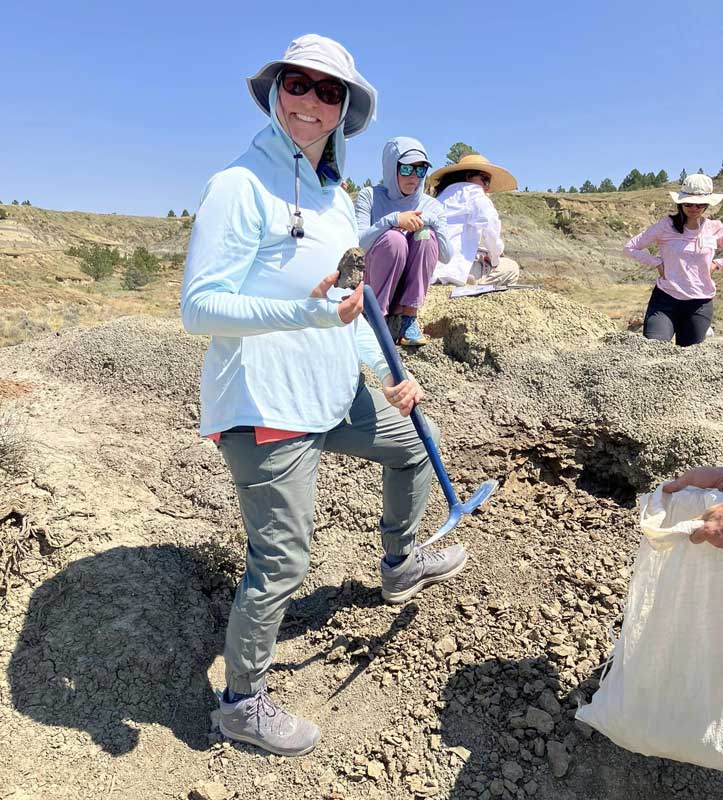
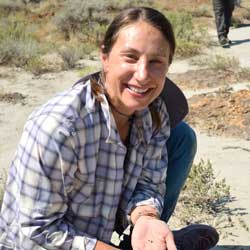
Molly Oosterhof
Elementary school teacher, Renton, Washington
Molly teaches 4th grade at Highlands Elementary in Renton, WA. Molly was excited to dive in head first during Field School and wasn’t afraid get her hands dirty:
“I'll never forget the feeling of finding that first fossil during DIG Field School—it was surreal. Being able to see and touch history was a powerful experience. I learned so much from the DIG staff, and other teachers from around the country. Participating in the DIG program has empowered me to share what I know, and further explore paleontology and geology with my students.”
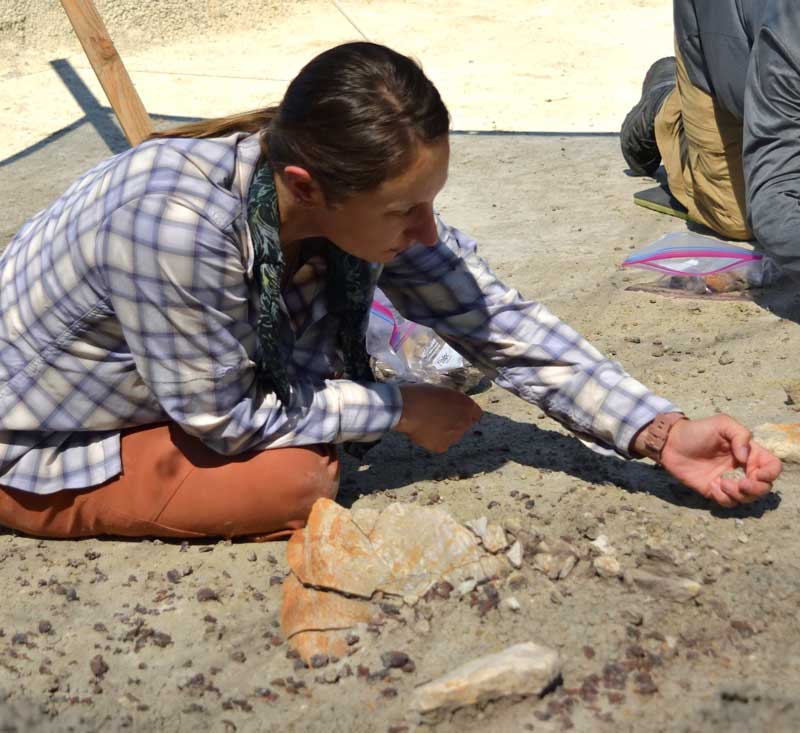
This fall, Molly found the DIG Box curriculum proved to be a powerful resource for her students, inspiring ongoing interest in geosciences:
“The Burke Boxes have provided me with the hands-on materials to teach about paleontology and geology in a real world way. So far I have used the DIG Foundations Box, and I will be using the DIG Microfossil Box soon! My students were beyond thrilled to get their hands on these [collection pieces]. They were so interested, they started writing their own books about rocks and fossils at home and checking out books from the library to read and share with others. Their curiosity and joy obtained from this purest form of learning was incredible to see. They have even started their own ‘Rock and Fossil Club.’ As an educator, this is what it's really all about. This shows them what it's like to be a lifelong learner if they let their curiosity guide them, and I hope it continues to spark enjoyment for years to come.”
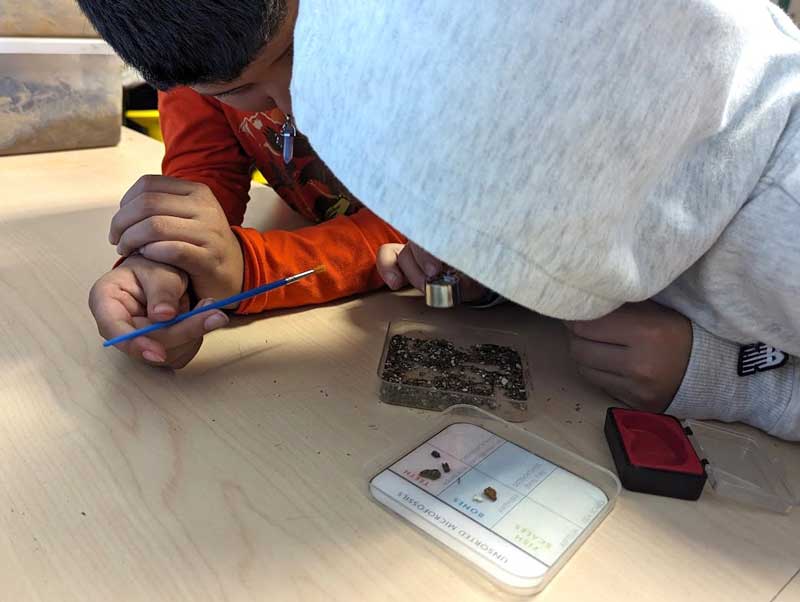
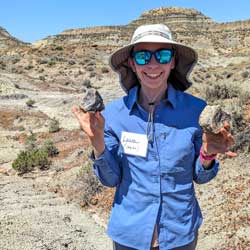 Laura Celik
Laura Celik
Middle school teacher, Princeton, New Jersey
Laura teaches 7th and 8th science at Princeton Charter School in Princeton, NJ. One of her goals for the past several years has been to integrate more earth science into the existing curriculum. Participating in the Field School this summer helped Laura add new authenticity to her teaching practice:
“As a middle school teacher, I have taught about rocks, fossils, and the K-Pg mass extinction many times. Before DIG Field School, these areas always felt like a second-hand story. I could tell the students about what I read or saw in a documentary, but I did not have a personal connection. After DIG Field School, teaching these topics was completely different. I felt like I truly understood what I was saying and could explain how the science is actually done in the field.
“One memorable DIG Field School experience was Project Day. We were divided into small teams, given GPS coordinates, and asked to use what we had learned in the previous days to analyze the geology of the location and find fossils…This put us in a position our students are often facing. Students deal with uncertainty while working on projects, feeling frustrated when their initial ideas do not work or confused about what is the best strategy to take with a limited amount of time. Project Day was an eye-opening opportunity to both experience paleontological field work and remember what it is like to be a student.”
Laura notes that this added knowledge—paired with the DIG Box curricular materials—helped her students have deep, authentic learning experiences this fall.
“This September, all of my students participated in the DIG Microfossils curriculum. It was an engaging, hands-on way to start the school year. Two highlights were microfossil sorting and the trace fossil mystery stations…I was particularly impressed at the arguments the students constructed while debating what the trace fossils revealed, and at how engaged they were while working on this activity.”
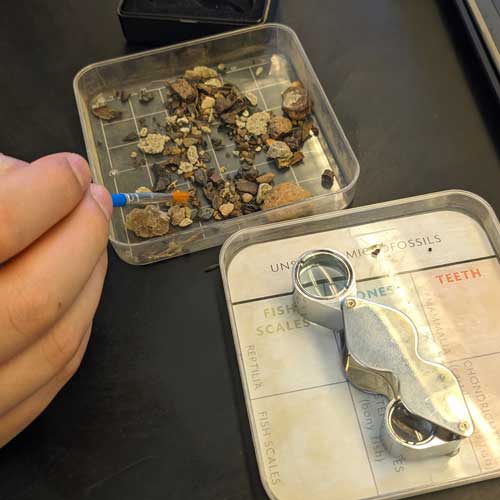
After this deep dive into paleontology through the DIG Boxes, Laura's students were inspired to do their own fossil sleuthing:
“While participating in the DIG curriculum this fall, several students decided to hunt through a pile of landscaping rocks next to our basketball court during lunch to see if they could find any fossils or identify the rocks. They found an excellent fossil [which] contained possible brachiopods from the Devonian!”
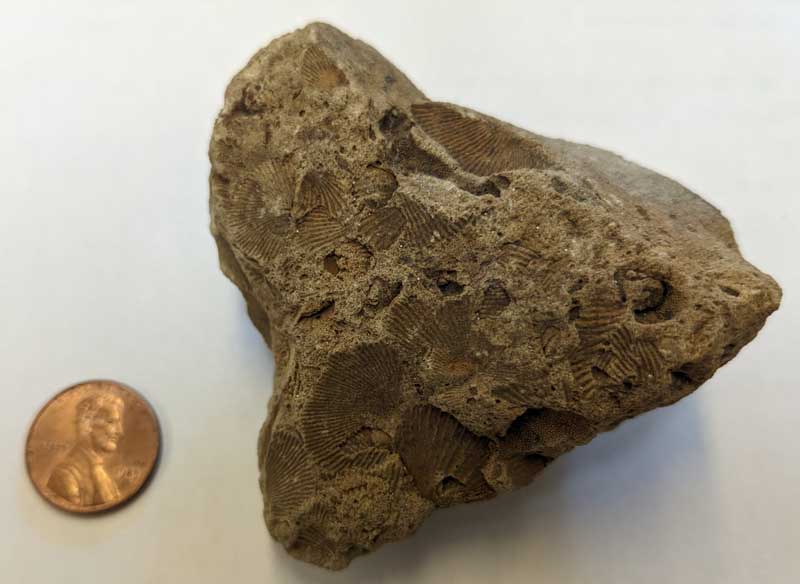
To other teachers considering the program, Laura offers this reassurance:
“I was initially worried about the camping and field work aspects because I do not have a lot of outdoor experience, but everything was well organized and I felt very prepared by the DIG team when I arrived in Montana. This was the best professional development experience I have ever been a part of, and I can not recommend it enough.”
Read more in this series: DIG Field School Classroom Connections, Part 1
Interested in participating in the DIG Program?
Sign up for our DIG Field School newsletter and we'll notify you when our 2024 DIG Field School application opens!

